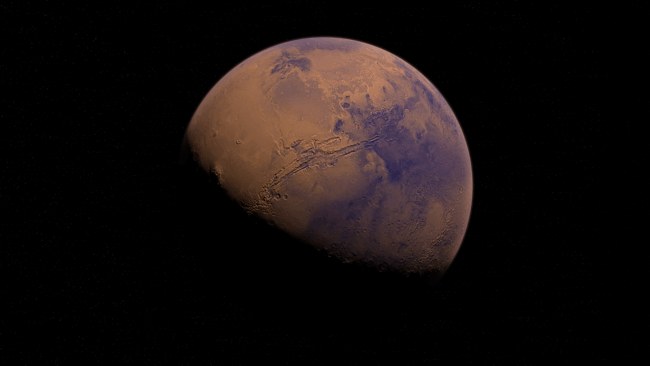The idea of future space colonisation is no longer confined to the realms of science fiction, but is seeming more like an inevitable reality. NASA aim to send humans to Mars by as early as the 2030s and space colonisation enthusiasts hope a human settlement will swiftly follow. So, let’s be optimistic for a moment – let’s assume scientists overcome the many challenges to establishing a Mars settlement – they perfect rocket technology, create self-sustaining ecosystems and even establish a peaceful and orderly society. One question, critical to sustaining a long-term colony, is often overlooked – can we have babies in space?
Human reproduction has evolved under Earth’s conditions. How would Mars’ drastically different environment, with reduced gravity, high radiation exposure, and an unbreathable atmosphere impact reproduction? We do not know.
One of the biggest unknowns is reduced gravity, or microgravity, on Mars. Mars’ gravity is only 38% of Earth’s and can cause bone mass loss, muscle atrophy and cardiovascular changes even in healthy astronauts. What impact would microgravity have on a mother and developing foetus? Would organs, bones and muscles develop properly? Would people born on Mars be permanently adapted to Mars’ microgravity?
Radiation poses another major concern. On Earth, pregnant women are advised against having an x-ray due to foetal safety concerns. On Mars, without Earth’s thick atmosphere and magnetic field to shield us, reproductive cells (eggs and sperm) of Martian settlers and potential embryos would be exposed to much higher levels of radiation which could lead to DNA damage, birth defects, or even infertility over time.
Animal studies suggest some stages of reproduction are possible in space. In 1994, Japanese medaka fish successfully fertilized eggs which hatched in microgravity and, in 2021, mouse embryos were cultured in the International Space Station for 4 days and appeared to develop normally with no signs of DNA damage. However, the effect of long-term exposure to microgravity and radiation remains unknown. Until a mammal conceives, gestates and gives birth in space, we have no definitive answer.
Limited data exists on human reproductive health in space – especially in females. As of March 2023, only 78 women have been to space, 11% of astronauts. While male and female astronauts have returned to Earth and had healthy children, these individuals are highly screened for physical and mental fitness, making them an unrepresentative sample. Space tourism could provide valuable insights but reproducing in space before we understand the risks could be unsafe. We do know that menstruation occurs in space, suggesting ovulation could too but whether conception and pregnancy could progress normally is uncertain.
More research is needed and assisted reproductive technologies like IVF and artificial wombs may play a crucial role. Until then, our dreams of becoming a multi-planetary species might need to be put on hold.
- https://www.nasa.gov/humans-in-space/humans-to-mars/
- https://coolcosmos.ipac.caltech.edu/ask/73-How-strong-is-the-gravity-on-Mars-
- https://www.nasa.gov/humans-in-space/the-human-body-in-space/
- https://www.nasa.gov/missions/station/cardiovascular-health-in-microgravity
- https://www.esa.int/Science_Exploration/Human_and_Robotic_Exploration/The_radiation_showstopper_for_Mars_exploration
- https://www.jstage.jst.go.jp/article/bss/9/1/9._31__article
- https://www.newscientist.com/article/2399067-mouse-embryos-have-been-grown-in-space-for-the-first-time/

